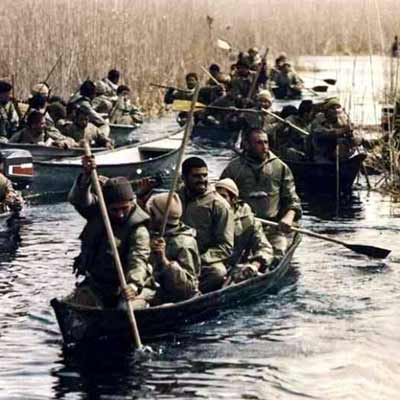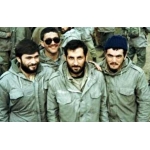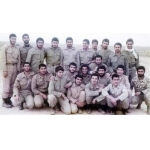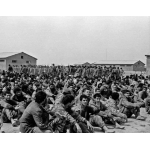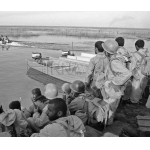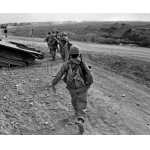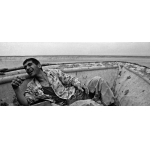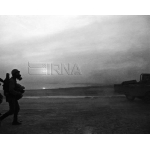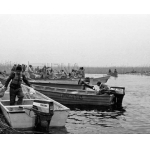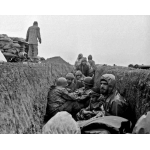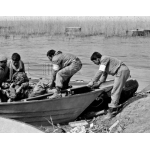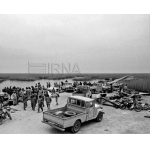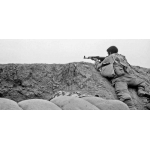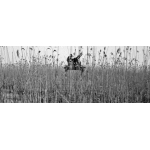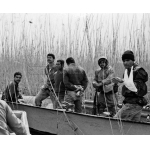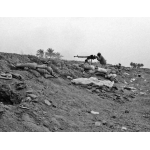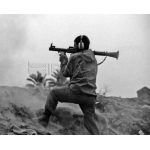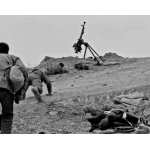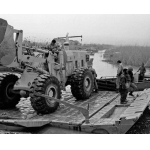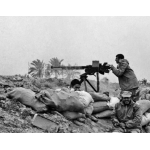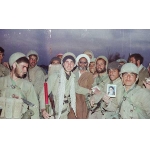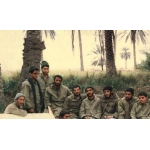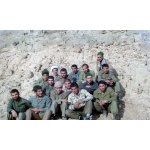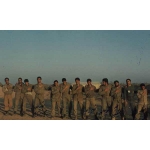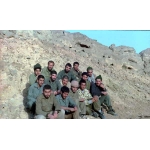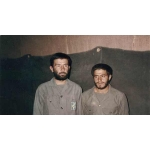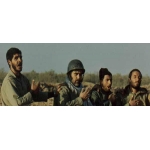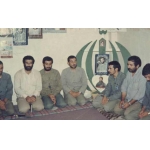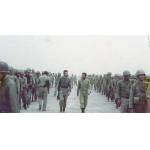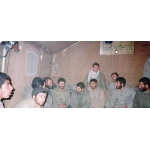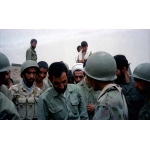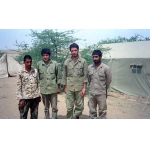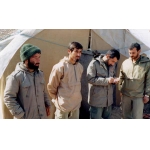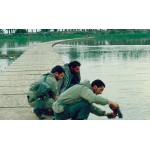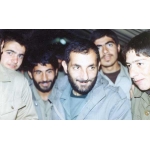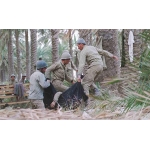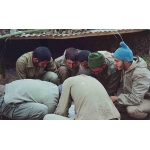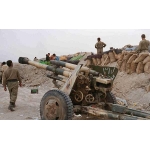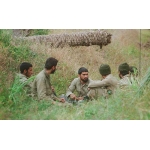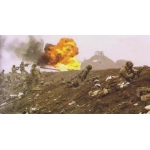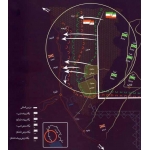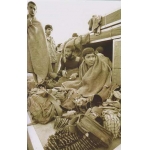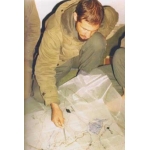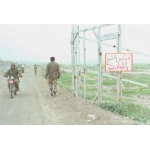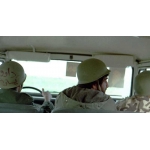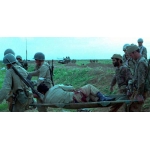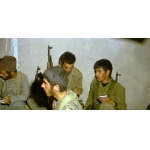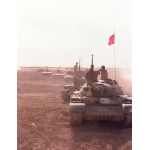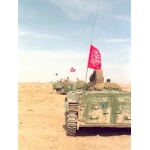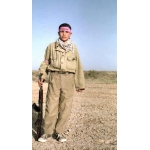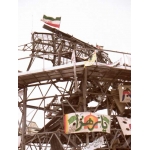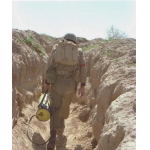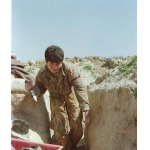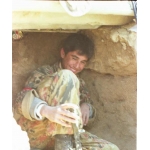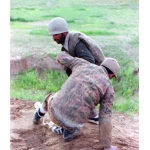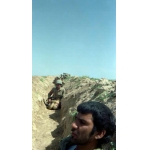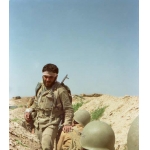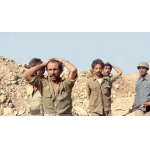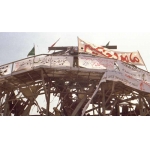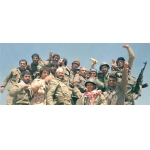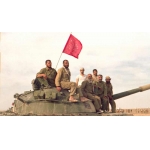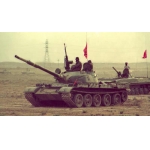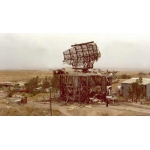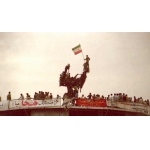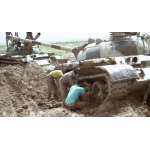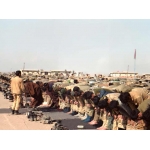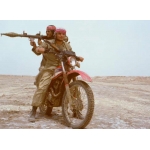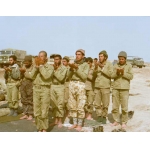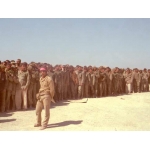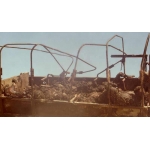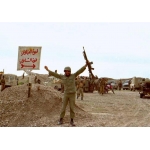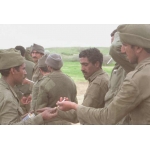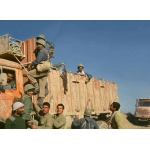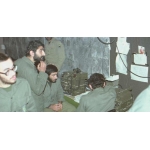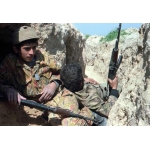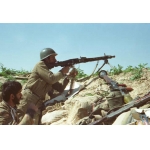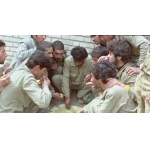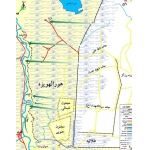Operation Badr
Milad Niksirat-Nakhjiri
1050 بازدید
Operation Badr was one of the offensive operations carried out by the Islamic Revolutionary Guard Corps and the Islamic Republic of Iran Army in 1984 in Hur al-Huweyzeh. It was conducted with the aim of reaching Basra.
The second stage of Iran's military strategy was designed to attack the Iraqi-aggressor and was carried out by implementing four operations, namely Ramadan (July 12 to July 27, 1982), the preliminary Fajr (7 February to 10 February 1983), Khyber (February 27 to March 12, 1984) and Badr (March 10 to March 16, 1985).[1]
The strategic importance of the region east of the Tigris, and the experiences gained from Operation Khyber, led to the selection of the region west of Hur al-Huweyzeh for Operation Badr. The region was divided into northern and southern parts. The northern axis was handed over to the Najaf Ashraf Camp and the southern axis to the Karbala Camp. The Najaf Ashraf Camp was responsible for area north of al-Baidah to the extension of the Jamal waterway, while the Karbala Camp from the north, in front of the Jamal waterway and the village of Najireh in the east of the Tigris, and from the south from al-Qurnah. Additionally, The Nuh Camp was tasked with capturing the al-Hawaidi Pad, then to advance towards the Zardan Bridge and, after the explosion of the Suaib Canal, to guide water towards Basra. The Zafar and Najaf 2 Camps were assigned as a precaution and tasked to carry out deception operations. The Zafar Camp would move from the al-Uzair region to the north west of the Tigris by means of a helicopter, while the Najaf 2 Camp should fire on the Amara-Basra Road and the northern parts of the al-Uzair Bridge.
The combat organization of these camps were:
- Najaf 1 Base: one army ground force division, three army brigades and three IRGC brigades.
- Najaf 2 Camp: one army division and one brigade from the IRGC.
- Karbala Camp: three divisions and one brigade from the army's ground forces and four divisions and three brigades from the IRGC.[2]
- Zafar Camp, whose forces were attained from the above camps (mostly Najaf 1 and Karbala), if a mission was available.
- Nuh Camp: one division and two brigades from the army.
In total, four divisions and one brigade of the army and nine divisions and nine brigades of the Islamic Revolutionary Guard Corps participated in this operation.
Iraq's force in this area before the operation consisted of 20 infantry battalions, 2 mechanized battalions, 9 artillery battalions and 5 tank battalions.[3] Before the start of the operation, an Iranian reconnaissance patrol group was captured and the Iraqis were informed about the implementation of this operation, which resulted in them reinforcing the number of special brigades with special ammunition.[4]
The operation started on March 10, 1985 at 23:00 with the codename of Fatima al-Zahra,[5] under the command of Khatam al-Anbiya Camp.[6] It was jointly conducted by the IRGC and the army. The first shot was fired by the Iranian soldiers towards the headquarters of the 429th Brigade, which was located in Bisheh Ajirdeh.[7] An area of approximately 1100 square kilometers was active.[8] In the axis of the Karbala Camp (southern flank of the operation), the Iraqi line was broken during the first hour of the operation.[9] The units quickly advanced to the second line and captured it. With the continuation of the advance, some forces were able to be deployed between the Jamel 3 Waterway and the Ruta Creek located behind the Tigris. However, due to encountering mines and the lack of boats to transport troops, the Tigris offensive was not completed, with the enemy remaining at a distance of one and a half kilometers between the two IRGC units, i.e., the 17th Division of Ali Bin Abi Talib and the 44th Brigade of Qamar Bani Hashem. In the axis of the 8th Najaf Division, the goals were achieved and all the units of the Karbala Camp were deployed behind the Tigris.
The forces of Najaf 2 (Nusrat) Base in the Taraba Axis (the northern limit of the operation) faced heavy fire and, although the Taraba checkpoint fell, the base commander ordered a retreat due to the lack of forces.[10] On the axis of the Najaf 1 Camp, the troops attacked the line at 23:00 and the line was broken by 24:00.
In the evening of the second day, by announcing the command to join the two armies and consolidate the line of Zulfikar, the Iranian Forces strengthened their position by forming a common line. On the third day, the forces of the three battalions of Sayyid al-Shuhadah, Ruhollah, and Imam Reza carried out offensive operations in order to stabilize and strengthen the defensive line. They succeeded in forming another security line parallel to the Safin Canal. They did this by advancing two kilometers and capturing another part of the Iraqi positions in the al-Nahir region.[11] The fourth day, March 14, was spent only in the exchange of fire between the two forces. During this operation, Ebrahim Jafarzadeh, the commander of the 18th al-Ghadir Brigade, was martyred. On the fifth day, March 15, at 13:00, Iraq began a heavy attack on perceived vulnerable areas, using all their artillery, missile, air force capabilities available. They succeeded in creating a breach on the eastern bank of the Tigris and a defensive formation by the afternoon[12] and disrupted the Iranian forces. The enemy's artillery fire targeted the first and second lines stationed at the back dam of the waterways.[13] Abbas Karimi, the commander of the 27th Division of Mohammad Rasulullah was martyred on this day.
Considering the vulnerability of the Safin Line (near the Tigris river) and the possibility of the enemy intensifying its pressure, the commanders of Khatam, Karbala and Najaf Camps, in a joint meeting decided to form a new camp called Zafar, with the 17th Division of Ali bin Abi Talib, the 7th Vali Asr Brigades, the 23rd Nohed Brigades, the 33rd al-Mahdi, 55th Airborne Division and special martyrs were under the command of this camp.[14] On the fifth night, in continuation of the efforts made to clear the village of Hudaybah, a part of the forces, under the command of the Ashura Army, crossed the Tigris and attacked the east of it. The next day, from around noon, the enemy increased its pressure and with the intensification of their aerial bombardment, prevented the Iranian Forces from securing the acquired areas.[15] The Iraqi Army, after preventing the deployment of Najaf Base units behind the Tigris river, attacked the forces of the Karbala Base. In that axis, the 31st Ashura Division crossed the Tigris and captured the land known as Kisei, west of the Tigris.[16] In the meantime, Mehdi Bakari, the commander of the 31st Ashura Division, was martyred.[17]
After the large-scale artillery fire and the pressure of the Iraqi planes, along with the use of chemical weapons, it was difficult to maintain the captured positions and the Iranian Forces had to retreat.[18] Iraq started its chemical attacks in the Majnoon Islands around 16:00 on March 22. These bombings resulted in 2,231 injuries and 32 martyrs in the first week.[19] Iraq used more than 30 chemical weapons in five days.[20]
In this operation, using 20 helicopters and 743 flight hours, while destroying bunkers and armored equipment and evacuating 1,028 wounded, Hovanirooz flew 945 fighters and carried the equivalent of 1,049 tons of supplies and ammunition.[21]
Finally, this operation ended with the stabilization of Iran's position in the east of the Tigris[22] and the liberation of a large part of the important and oil-rich areas of Majnoon and more than 500 square kilometers of Hor region.[23] It also resulted in the destruction of 6 airplanes, 5 helicopters, 250 tanks and personnel carriers, 60 mortars, 200 military vehicles and 40 cannons, and the destruction of nearly twenty enemy brigades and battalions. 15,000 people were killed and wounded, with 3,200 captured by the enemy.[24] The casualties of the Iranian Forces in this operation were more than the casualties of the Iraqi Army.[25] Iraq called this operation "Taj al-Maarek.”[26]
After the operation, American and Soviet representatives agreed to support Iraq in a meeting in Vienna, in order to prevent the defeat of Iraq. Four days after the operation, the American government asked Iran to end the conflict through negotiations. The UK also requested a ceasefire between Iran and Iraq through the United Nations.[27]
After Operation Badr, according to the order of the operational base of Khatam al-Anbiya, it was decided that the Islamic Republic of Iran Army and the Islamic Revolutionary Guard Corps would act separately in the next operations.[28]
[1] Drodian, M., Review of the Iran-Iraq War, Volume 3: Faw to Shalamcheh, Tehran: Islamic Revolutionary Guard Corps, Sacred Defense Records and Research Center, 2nd quarter, 1999, p.6; Rashid, M., Iran-Iraq War Atlas, Tehran: Islamic Revolutionary Guard Corps, Sacred Defense Documentation and Research Center, second edition, 2009, pp. 68, 70, 72, 73.
[2] Allahdad, H., daily reports of the battle scene of the 17th division of Ali Bin Abitaleb, Tehran: Islamic Revolutionary Guard Corps, Holy Defense Documentation and Research Center, 2011, pp. 132-136.
[3] Ibid, p. 135.
[4]Al-Alawi, E., Battle of Hor, and translator: Abdol Rasool R., Tehran: Hozha Haneri, 1375, pp. 41 and 42.
[5] Drodian, M., A Path in the Iran-Iraq War, Volume 2: Khorramshahrta Faw, Tehran: Islamic Revolution Guards Corps, Holy Defense Documents and Research Center, Ch 5, 1378, p.107.
[6] Soltani, M., Hwaniroz and Badr epic, Tehran: Sore Sabz, 2009, p. 22.
[7] Jazayeri, M., Majnoon, Tehran: Nasim Hayat and Sarir, 2004, p. 139; Habibi, A., Record of Islamic Guards Operations in Eight Years of Holy Defense, Tehran: Public Relations and IRGC Publications Department, 5th Ch, 1383, p.98.
[8] Guide to 8-year war operations, Tehran: Islamic Revolutionary Guard Corps, Sacred Defense Documentation and Research Center, 3rd Ch, 1372, p. 45.
[9] Allahdad, H., daily reports of the battle scene of the 17th division of Ali bin Abitaleb, p. 137.
[10] Ibid, p. 138.
[11] Ibid, pp. 139 and 148.
[12] Ibid, p. 149; Habibi, A., the record of the operations of the Islamic armies in the eight years of holy defense, p. 100.
[13] Babaei, G.A., until the end of Al-Hala, Tehran: Saeqa, 1391, p. 131.
[14] Allahdad, H., daily reports of the battle scene of the 17th division of Ali bin Abitaleb, p. 149; Habibi, Abu al-Qasim, the record of the operations of the Islamic armies in the eight years of holy defense, p. 100.
[15] Jazayeri, M., Majnoon, p. 159.
[16] Allahdad, H., daily reports of the battle scene of the 17th division of Ali bin Abitaleb, p. 140.
[17]Ibid. p. 141.
[18] Drodian, M., A review of Iran-Iraq War, Volume 6: Beginning to End, Tehran: Islamic Revolutionary Guard Corps, Sacred Defense Documentation and Research Center, 2014, p. 108.
[19] Forotan, A., Iraq's chemical warfare and its medical experiences, Tehran: Timurzadeh-Tabib, 2002, p. 122
[20]Drodian, M., Siri in Iran-Iraq war, vol.6, p.115.
[21] Soltani, M., Hwaniroz and Badr's Great Epic, p. 31
[22] Samii, A., Descriptive record of the operations of eight years of holy defense, Tehran: Vice-Chancellor of Propaganda and Publications of Wali Faqih Representation in the Ground Force, 1376, p.197.
[23] Ibid. Darakhsandeh, A., From Madness to Majnoon, Tehran: Hadith Qalam, 2013, p. 24.
[24] Samii, A., Descriptive record of operations of eight years of holy defense, p. 198
[25] Saleminjad, A. R., A look at the epic presence of the 7th Vali Asr (AS) division in the eight years of holy defense, Vol. 7: Crossing the Safin and Nineva waterways, Tehran: Nilofran, 2017, p. 345.
[26] Fallah Ellami, F., Mission in Khorramshahr, translator: Mehrdad Azad, Tehran: Hozha Arti, 1376, p.84.
[27] Asgharzadeh, T., Sardar Badr, Urmia: Takvin, 2006, p.102.
[28] Taghianpour, A., Shadows of Light, Tehran: Iran Sabz, 2013, p.55.


